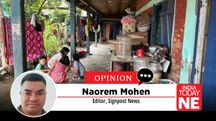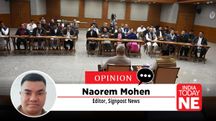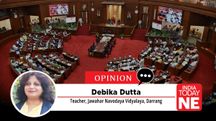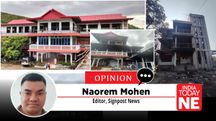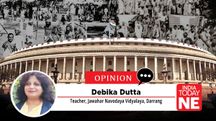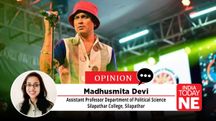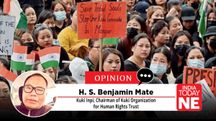Why is the ‘Miya’ identity problematic?
At a time when the state is already at war against drug peddlers and criminal syndicates, these are concerns that need to be addressed holistically, especially taking into account the continuous assertion and re-assertion of a separate Miya identity by a certain section of Muslims in the state.
 Why is the ‘Miya’ identity problematic?
Why is the ‘Miya’ identity problematic?From Miya Poetry to the recent controversy over the Miya Museum inaugurated in the Goalpara district of Lower Assam, the clamour for a separate ‘Miya’ identity just doesn’t seem to end. Well, the Lutyens’ elite club of armchair intellectuals and academics might be far away from the ground realities in a state like Assam that has been bearing the brunt of illegal immigrants since the pre-Independence days, but, for the common public of Assam, this humungous problem is very much there in front of their eyes to see.
While conducting my PhD field visits in some of the char areas of Assam, it was as if an entirely new frontier of research had opened – a dark, gloomy frontier that still remains unexplored in academic circles not from the point of view of the education/literary or medical facilities available in these areas, but from the perspective of the safety and security of the state and its citizens.
Following a request from the Assam State Police a few months back from now, the Ministry of External Affairs had to cancel the visa of a māulvi from Bangladesh in December 2021.
It later came to light that the māulvi was supposed to deliver a lecture among the char dwellers of Barpeta. The fact that the char-chapori areas of Assam have transformed into destinations for some radical Islamists to infuse fundamentalist ideas among its predominantly Muslim residents as a mechanism to create unrest in the state is something which can no longer be overlooked.
At a time when the state is already at war against drug peddlers and criminal syndicates, these are concerns that need to be addressed holistically, especially taking into account the continuous assertion and re-assertion of a separate Miya identity by a certain section of Muslims in the state.
Miya is a colloquial form of address used by most common men and women in Assam for the East-Bengal origin Sylhetia and Mymensingia Muslim community. It is a commonplace reference used to describe their language, food habits and culture, which are very different from the Assamese community.
But, what makes this identity so much problematic and unacceptable in Assam? Undoubtedly, it stems from the palpable threat and fear of the Assamese community for an uncertain future, the fear of cultural decimation and eventually becoming a minority in their own homeland. It would be wrong to understand this emotion of the common Assamese people for their lands and future, especially in those districts where they have already been reduced to a minority, through pejorative terms such as ‘xenophobia’ or ‘Islamophobia’. It is disparaging and intellectually dishonest at the same time to not anymore acknowledge the problem the way it is.
Moreover, the assertion of a separate Miya identity by these Muslims that stands in conflict with the larger Assamese regional identity amounts to a re-invention of Jinnah’s Two-Nation theory. The complex sub-regional matrix of the Assamese polity is too delicate, if not tread carefully. With the immense financial clout of perfume-baron Maulana Badruddin Ajmal and especially after the scrapping of the IMDT Act in 2005, an irreversible dent has already been made by the AIUDF on the Muslim vote bank in Lower Assam. Far radical Islamist groups based in the Barak Valley such as the Ahle Sunnat Wal Jamaat and the Nadiya Tu Tamir have complicated matters further.
The audacity to establish a separate Miya museum is just another way to defame the larger Assamese society (including people from different ethnic communities as well). The simple and peace-loving people of Assam have had their own share of contributions in facilitating the upward social and economic mobility of this section of the Muslims in the state. It also implicitly supports the creation of another separate nation within Bharat. We simply cannot bear the trauma of another Partition.
A comparison of the figures from the last two Censuses (2001 and 2011) with respect to the abnormal increase in the Muslim population of the state (especially the border districts) does not bode well for the future of Assam, its cultural identity and civilisational heritage.
The controversial statements regarding language, clothing, etc. that we have been hearing from time to time from a few Muslim leaders in Opposition to the Assam Legislative Assembly, are nothing but an explicit attempt to Islamise Assam.
These are serious political and economic questions, a question of survival, and must therefore not be looked at through the binary prism of the secular versus communal divide.
Since the very beginning, CM Dr Himanta Biswa Sarma has been outrightly unapologetic in his tone and tenor in rejecting this vicious brand of politics. The assertion of a separate Miya identity in Assam has always been camouflaged by the liberal claim of all civilisations and cultures being tolerant and equally respectful of diversity. This is what makes it all the more dangerous!
(The writer is currently associated as an Assistant Professor at the Center for Indic Studies, Indus University, Ahmedabad).
Copyright©2025 Living Media India Limited. For reprint rights: Syndications Today
